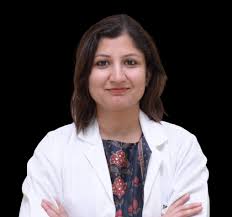Overview
Cancer that begins in the lungs is called Lung cancer and may spread to lymph nodes or to other organs in the body like the brain. It is a dreadful adversary, impacting the tissues of the lungs and posing significant health challenges. For early detection and effective treatment, we need to understand its convolutions.
Lung cancer is like an umbrella term encompassing various subtypes, each with unique characteristics and treatment approaches. The most common subtypes include:
- Non-Small Cell Lung Cancer (NSCLC): NSCLC is the most prevailing type, accounting for 80 - 85% of lung cancer cases. Further, It can be divided into types, such as adenocarcinoma, squamous cell carcinoma, and large cell carcinoma. Each of these subtypes has distinct characteristics and may require different treatment strategies.
- Small Cell Lung Cancer (SCLC): Also known as 'oat-cell' because the cells look like oats under the microscope. While less common, SCLC tends to grow and spread viciously. It is often associated with a smoking history and typically necessitates specialized treatment due to its swift growth.
- Other types of cancer in the lungs: Other types of cancer can start in or around your lungs, including lymphomas (cancer in lymph nodes), sarcomas (cancer in bones or soft tissue), and pleural mesothelioma (cancer in the lining of the lungs). These are usually treated in a different way and do not fall under the category of lung cancer.
Symptoms
For significant treatment outcomes, early detection of lung cancer is vital. It's important to note that some symptoms are not exclusive to lung cancer and can be associated with various other medical conditions. However, if one experiences persistent or worsening symptoms, especially if that person is a current or former smoker or has other risk factors, it is essential to seek medical evaluation promptly.
Symptoms of lung cancer may include:
- Persistent Cough: A persistent cough, often with blood, can be a warning sign.
- Shortness of Breath: Lung cancer can affect lung function, leading to difficulty in breathing.
- Unexplained Weight Loss: Significant and unexplained weight loss may indicate underlying health issues, including cancer.
- Chest Pain: Chest pain or discomfort may occur, especially during deep breathing or coughing.
- Hoarseness: Changes in voice or hoarseness may result from lung cancer affecting the vocal cords.
- Fatigue: General fatigue and weakness can be symptoms of advanced lung cancer.
- Frequent Respiratory Infections: Frequent lung infections may be indicative of compromised lung function.
- New onset of Wheezing: Breathing with difficulty especially with the whistling sound.
Common Treatment Options
Lung cancer treatment necessitates a multidisciplinary approach and may involve several options. The choice of treatment depends on the lung cancer type and the question of how far it has spread.
- Chemotherapy: Chemotherapy, commonly known as 'chemo,' utilizes powerful drugs to target and eradicate cancer cells throughout the body. It may be recommended as a primary treatment, before or after surgery, or in combination with radiation therapy. Recent advancements have yielded more precise and less toxic chemotherapy options, minimizing adverse effects while improving effectiveness.
- Radiation Therapy: Radiation therapy employs high-energy beams to precisely target and eliminate lung cancer cells. It can serve as a standalone treatment, shrink tumours before surgery, or eliminate residual cancer cells post-surgery. Additionally, it proves highly effective in controlling localized diseases, offering an essential component of lung cancer treatment plans.
- Surgery: Surgical interventions are designed to remove cancerous tissue from the lungs. The extent of surgery depends on factors like tumour size, location, and stage. Whenever possible, minimally invasive techniques and lung-sparing surgeries are explored to preserve lung function, enhancing the patient's quality of life.
- Targeted Therapy: Specific genetic mutations in certain lung cancers can be targeted with specialized medications. Targeted therapy drugs precisely block the growth and spread of cancer cells, offering a more focused approach compared to traditional chemotherapy. These therapies are often well-tolerated, with fewer side effects, and contribute to improved treatment outcomes.
- Immunotherapy: Immunotherapy leverages the body's immune system to recognize and eliminate lung cancer cells. It has displayed significant potential in treating specific types of lung cancer by bolstering the body's natural defences against the disease. Immunotherapy holds the promise of durable responses with reduced side effects compared to conventional treatments.
Brief about the Surgical Procedure
Surgical procedures for lung cancer aim to remove cancerous tissue while preserving lung function and overall health. Common surgical options include:
Lobectomy: In this procedure, the entire lobe of the lung containing the tumour is removed. It is a common approach for early-stage lung cancer, especially when the tumour is confined to a single lobe.
Wedge Resection: In cases where removing an entire lobe is not necessary, a smaller section of the lung, including the tumour, may be removed. This approach is considered when the tumour is small and localized.
Pneumonectomy: This extensive surgery involves the removal of an entire lung. It is typically reserved for advanced cases or when the tumour is large and cannot be managed with a more conservative approach. Patients who undergo pneumonectomy require specialized post-operative care and may need rehabilitation.
Video-Assisted Thoracoscopic Surgery (VATS): VATS is a minimally invasive technique that uses small incisions and a camera to access and remove tumours. It often results in shorter recovery times and less post-operative discomfort. VATS is suitable for selected patients with early-stage lung cancer.
Choosing the treatment that is right may be hard. One can always talk to a cancer doctor about the treatment options available for a specific type and stage of cancer. Your doctor can explain the risks and benefits of each treatment and their side effects as well (side effects are how your body reacts to some drugs or other treatments).
Sometimes people like to get an opinion from more than one cancer doctor. This is called a “second opinion”. Getting a second opinion may help to choose the treatment that is right for you.
By providing comprehensive information about lung cancer and its treatment options, we aim to empower patients and caregivers with the knowledge they need to make informed decisions about their healthcare journey. Our commitment to compassionate care and patient-centric solutions is at the core of our mission to support you on your path to recovery.
Get Treatment from the Best in Industry
Our Specialists

Dr. Vikram Singhal
Speciality: Medical & Hemat Oncologist
Experience: 12+ Years
Qualification: MBBS, MD (Radiation Oncology), DNB (Radiation Oncology), DrNB (Medical Oncology), MRCP (UK) SCE (Medical Oncology)

Dr. Sukriti Gupta
Speciality: Hemato-Oncologist
Experience: 11+ Years
Qualification: PDCC Hemato-Oncology Sanjay Gandhi Post Graduate Institute of Medical Sciences, Lucknow, MD (Pediatrics) Lady Hardinge Medical College and associated Kalawati Saran Children’s Hospital, Delhi, MBBS Maulana Azad Medical College & associated Lok Nayak Hospital, Delhi


Dr. Raajit Chanana
Speciality: Medical Oncology (Hemato-Oncology)
Experience: 15+ Years
Qualification: MBBS - Maulana Azad Medical College (MAMC), MD Internal Medicine -Lady Hardinge Medical College, DM Oncology - Tata Memorial Hospital, Mumbai (2017)